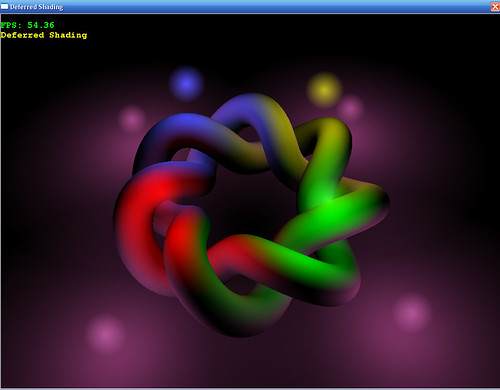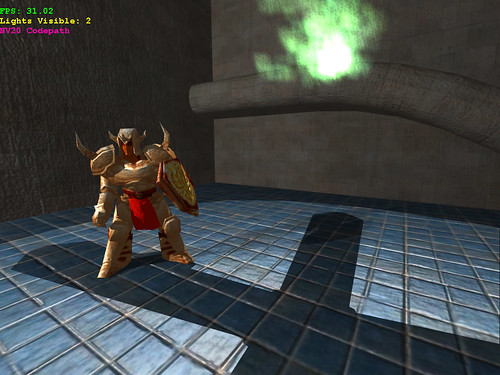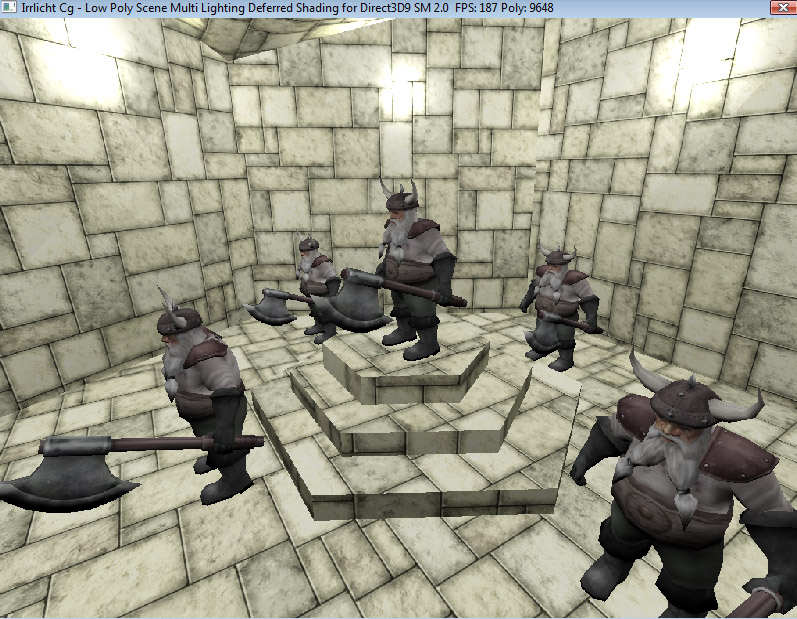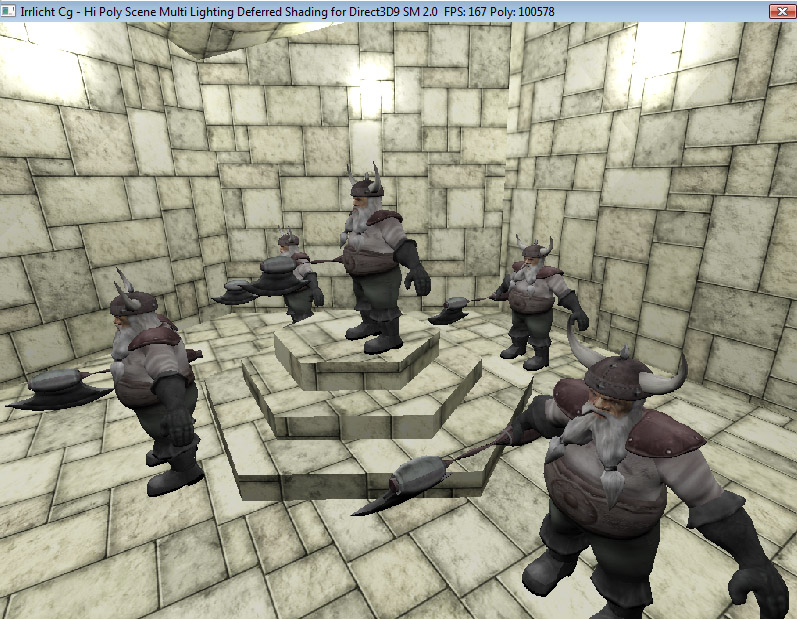What was demoed here was diffuse and specular. Not sure if emissive was in there, maybe not. I'm sure calculation of normals were not shown as well.
I'm assuming bump maps will have to be shader-driven, though. Coz, I still have no idea how fixed-function and shaders work together to produce all these effects.
Anyway, I've got hold of a sample opengl code showing deferred shading. The code will teach me how it works, I guess.
http://www.paulsprojects.net/opengl/def ... fshad.html

I had to update my dev machine to use glext.h and wglext.h
see: http://www.opengldistilled.com/downloads.html












